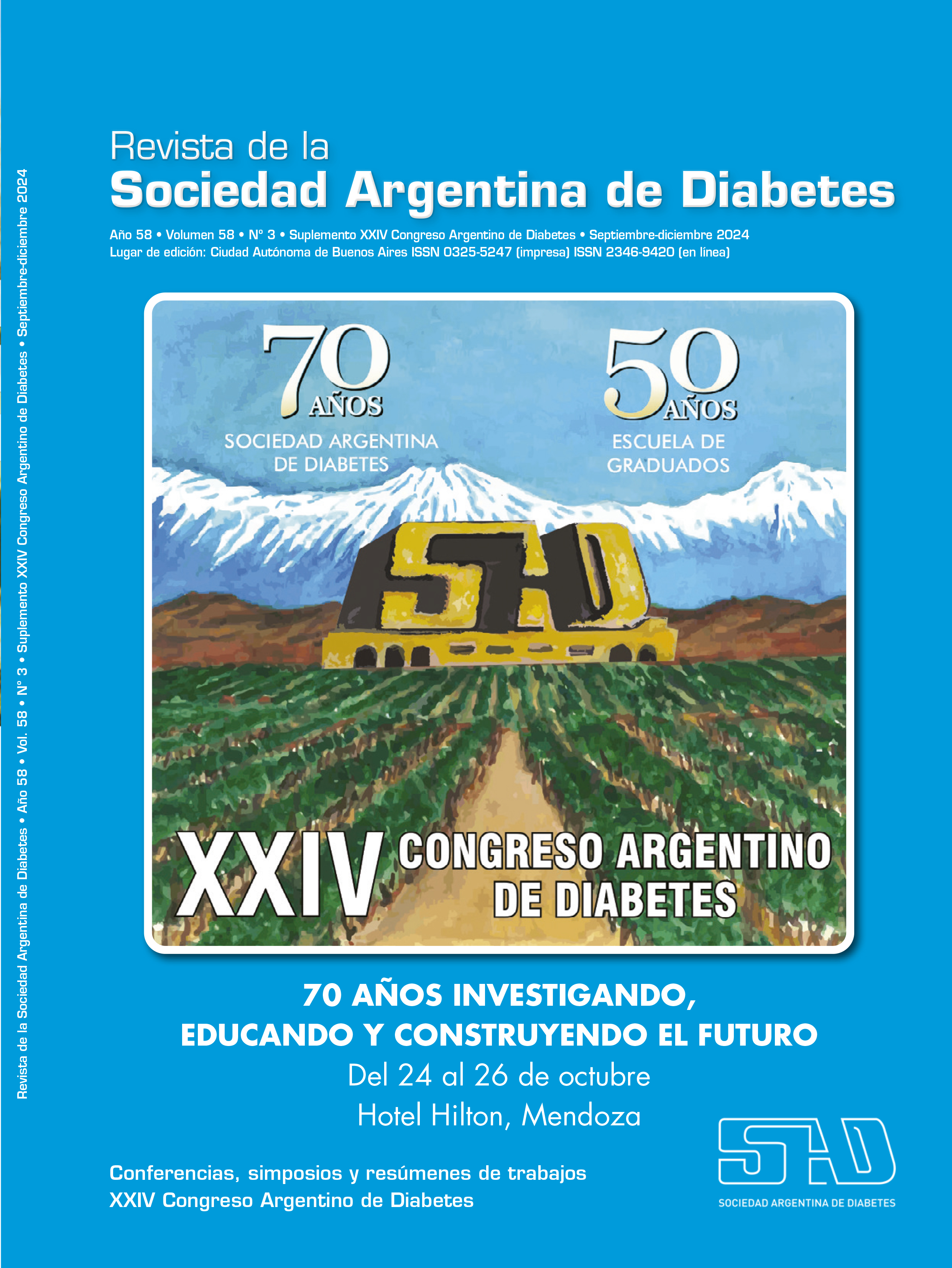From pathophysiology to clinical implications
Keywords:
metabolic-reno-vascular syndromeAbstract
In November 2024 the American Heart Association addressed the Cardio-Reno-Metabolic Syndrome by presenting its newly modified risk score, called PREVENT, to society. It rightly includes albumin/creatinine ratio, glycosylated haemoglobin and social determinants of health. However, it is most appropriate to speak of Metabolic-Reno-Vascular Syndrome (MRVS), as the SAD has titled this symposium. Appropriate because the early onset (childhood and adolescence) of MRVS is clearly metabolic, and the major late complications are clearly cardiovascular, renal and neurological.
It all starts with the genetic load at fertilisation, followed by intrauterine epigenetics (fetal programming), epigenetics in childhood and adolescence (social and environmental surroundings, pollution, socio-economic level, community, neighbourhood), behavioural issues (diet, exercise, weight, smoking, sleep quality) and finally the classic "physico-chemical" risk factors (hypertension, dyslipidemia, adiposity, dysglycemia). This trajectory, which begins in the first years of life with varying degrees of individual vulnerability, will mark the future of each individual because it initiates the inevitable fate of atherosclerosis and arteriosclerosis. Both are common and exist, albeit almost undetectable, from the second decade of life. They will silently progress for 20 to 30 years and will become the leading cause of death in the world from the age of 35-40. The combination of events includes acute myocardial infarction, stroke, coronary heart disease, heart failure, atrial fibrillation and renal failure.
The intimate or early pathophysiological mechanisms lie generically in adiposity and dysglycemia, but focus on insulin resistance, low-grade inflammation, oxidative stress, endothelial dysfunction, reactive oxygen species, and others. All of these are linked to other much-needed intermediates such as ectopic fat disposal, the key role of the microbiota and the liver.
The only strategy to ameliorate the pandemic of early adiposity and dysglycemia is 1) early perinatal, childhood and adolescent education; 2) paramount and then primary prevention; 3) early detection of atherosclerosis, arteriosclerosis, structural heart disease (atria and ventricles) and nephropathy, and 4) aggressive treatment with healthy eating, exercise, weight control, avoiding bad habits, etc, and eventually pharmacological measures, always following clear targets (weight, blood pressure, lipid levels, glycaemia, inflammatory markers, etc).
References
I. Ndumele CE, Rangaswami J, Chow SL, Neeland IJ, Tuttle KR, Khan SS, et al; American Heart Association. Cardiovascular-kidney-metabolic health: a presidential advisory from the American Heart Association. Circulation 2023 Nov 14;148(20):1606-1635. doi: 10.1161/CIR.0000000000001184.
II. Gooding HC, Gidding SS, Moran AE, Redmond N, Allen NB, Bacha F, et al. Challenges and opportunities for the prevention and treatment of cardiovascular disease among young adults. Report from a National Heart, Lung, and Blood Institute Working Group. J Am Heart Assoc 2020 Oct 20;9(19):e016115. doi: 10.1161/JAHA.120.016115.
III. Mechanick JI, Farkouh ME, Newman JD, Garvey WT. Cardiometabolic-based chronic disease, addressing knowledge and clinical practice Gaps: JACC state-of-theart review. J Am Coll Cardiol 2020 Feb 11;75(5):539-555. doi: 10.1016/j.jacc.2019.11.046.
Downloads
Published
Issue
Section
License
Copyright (c) 2024 on behalf of the authors. Reproduction rights: Argentine Society of Diabetes

This work is licensed under a Creative Commons Attribution-NonCommercial-NoDerivatives 4.0 International License.
Dirección Nacional de Derecho de Autor, Exp. N° 5.333.129. Instituto Nacional de la Propiedad Industrial, Marca «Revista de la Sociedad Argentina de Diabetes - Asociación Civil» N° de concesión 2.605.405 y N° de disposición 1.404/13.
La Revista de la SAD está licenciada bajo Licencia Creative Commons Atribución – No Comercial – Sin Obra Derivada 4.0 Internacional.
Por otra parte, la Revista SAD permite que los autores mantengan los derechos de autor sin restricciones.




























